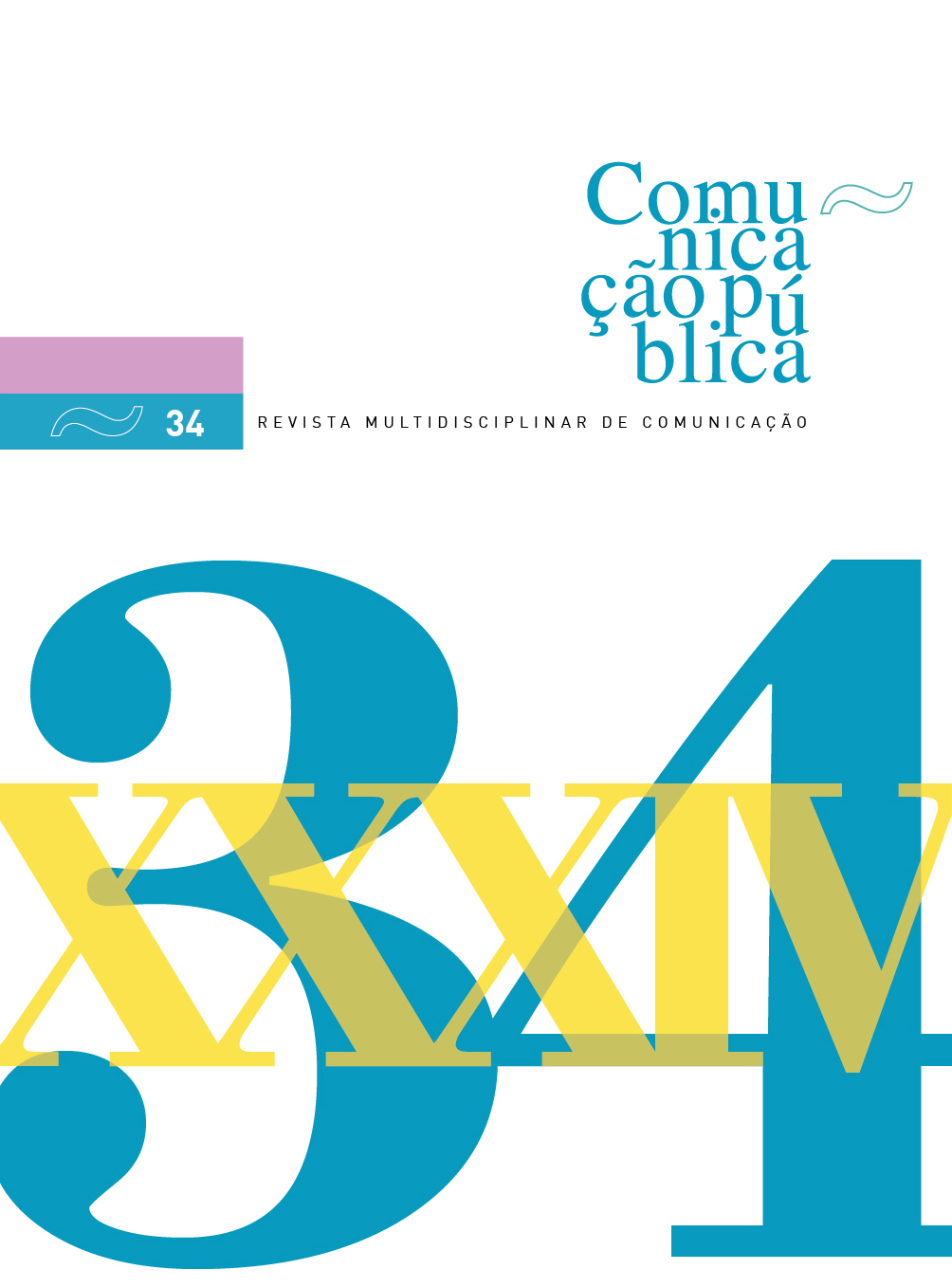Comparing the impact of screen size on student's perception
a study of movie theaters vs. other personal screens
DOI:
https://doi.org/10.34629/cpublica.732Keywords:
audience reaction, screens, films, students, perceptionAbstract
The present study focuses on using films in education, exploring the potential differences in impact between watching films in a conventional movie theater and on personal screens such as PCs, tablets or smartphones. It is based on empirical data, involving field research with students (N = 324) aged between 12 and 18 years old. Online questionnaires, accessible via QR codes, were used to collect the data at the end of the film screenings. The results indicate that the traditional movie theater viewing experience leads to a higher level of impact and increases the predisposition to engage with the content translated into more extensive and in-depth comments within the field research. Furthermore, it is noted that students who watched films on personal screens attributed less importance to visual aspects, particularly screen size and resolution, being a potential indicator of less attention and focus on what is being presented. Above all, this study demonstrates the importance of creating movie theaters-like atmosphere in educational settings to provide students with a more intense and effective audiovisual experience.
Downloads
References
Appel, M., & Mengelkamp, C. (2022). Watching videos on a smartphone: Do small screens impair narrative transportation? Media Psychology, 25(5), 653-674. https://doi.org/10.1080/15213269.2021.2025109.
Baranowski, A. M., & Hecht, H. (2014). The big picture: Effects of surround on immersion and size perception. Perception, 43(10), 1061-1070. https://doi.org/10.1068/p7663.
Bellour, R., Radner, H., & Fox, A. (2018). Raymond Bellour: Cinema and the moving image. Edinburgh University Press. http://www.jstor.org/stable/10.3366/j.ctv7n08qk.
Beugnet, M. (2014). Miniature pleasures: On watching films on an iPhone. In J. Geiger, & K. Littau (Eds.), Cinematicity in media history (pp. 196-210). Edinburgh University Press.
Beugnet, M., & Oever, A. van den. (2018). Gulliver goes to the movies: Screen size, scale, and experiential impact – A dialogue. In Screens (pp. 247-257). Amsterdam University Press. https://doi.org/10.1515/9789048531691-021.
Bracken, C. C., & Pettey, G. (2007). It is REALLY a smaller (and smaller) world: Presence and small screens. Presence 2007: The 10th Annual International Workshop on Presence, 283-290.
Brown, T. (2011). Using film in teaching and learning about changing societies. International Journal of Lifelong Education, 30(2), 233-247. https://doi.org/10.1080/02601370.2010.547615.
Chion, M. (1994). Audio-Vision: Sound on screen. Columbia University Press.
Couldry, N. (2019). Media: Why it matters. Polity Press.
Dunaway, J., & Soroka, S. (2019). Smartphone-size screens constrain cognitive access to video news stories. Information, Communication & Society. https://doi.org/10.1080/1369118X.2019.1631367.
Governo dos Açores. (2021). Estatísticas da educação 2020/2021. https://portal.azores.gov.pt/web/sreac/estatísticas.
Gunter, B. (2000). Media research methods: Measuring audiences, reactions and impact. Sage Publications. https://doi.org/10.4135/9780857028983.
Kim, K. J., & Sundar, S. S. (2016). Mobile persuasion: Can screen size and presentation mode make a difference to trust? Human Communication Research, 42(1), 45-70. https://doi.org/10.1111/HCRE.12064.
Martinelli, D. (2020). What you see is what you hear. Springer International Publishing. https://doi.org/https://doi.org/10.1007/978-3-030-32594-7.
Odin, R. (2018). The concept of the mental screen: The internalized screen, the dream screen, and the constructed screen. In D. Chateau, & J. Moure (Eds.), Screens (pp. 176-185). https://doi.org/10.1515/9789048531691-016.
Park, H., & Cho, H. (2021). Effects of nursing education using films on perception of nursing, satisfaction with major, and professional nursing values. Journal of Nursing Research, 29(3). https://doi.org/10.1097/JNR.0000000000000433.
Petkari, E. (2017). Building beautiful minds: Teaching through movies to tackle stigma in psychology students in the UAE. Academic Psychiatry, 41(6), 724-732. https://doi.org/10.1007/s40596-017-0723-3.
Rao, A., & Hartmann, W. R. (2015). Quality vs. variety: Trading larger screens for more shows in the era of digital cinema. Quantitative Marketing and Economics, 13(2), 117-134. https://doi.org/10.1007/s11129-015-9156-z.
Reeves, B., Lang, A., Kim, E. Y., & Tatar, D. (2009). The effects of screen size and message content on attention and arousal. Media Psychology, 1(1), 49-67. https://doi.org/10.1207/S1532785XMEP0101_4.
Rigby, J. M., Gould, S. J. J., Brumby, D. P., & Cox, A. L. (2016). Watching movies on netflix: Investigating the effect of screen size on viewer immersion. Proceedings of the 18th International Conference on Human-Computer Interaction with Mobile Devices and Services Adjunct, MobileHCI 2016, 714-721. https://doi.org/10.1145/2957265.2961843.
Szita, K. (2019a). Smartphone cinematics: A cognitive study of smartphone spectatorship. University of Gothenburg. http://www.tara.tcd.ie/handle/2262/99565.
Szita, K. (2019b). Watching films on a small screen has an impact on comprehension and immersion. University of Gothenburg. https://www.gu.se/en/news/watching-films-on-a-small-screen-has-an-impact-on-comprehension-and-immersion.
Szita, K., & Rooney, B. (2021). The effects of smartphone spectatorship on attention, arousal, engagement, and comprehension. I-Perception, 12(1). https://doi.org/10.1177/2041669521993140.
Tan, E. S. (2013). Emotion and the structure of narrative film: Film as an emotion machine. In Emotion and the Structure of Narrative Film. Routledge. https://doi.org/10.4324/9780203812761.
Troscianko, T., Meese, T. S., & Hinde, S. (2012). Perception while watching movies: Effects of physical screen size and scene type. I-Perception, 3(7), 414-425. https://doi.org/10.1068/i0475aap.
Van Der Sluis, F., Van Den Broek, E. L., Van Drunen, A., & Beerends, J. G. (2018). Mobile screen size limits multimodal synergy. ACM International Conference Proceeding Series. https://doi.org/10.1145/3232078.3232101.
Downloads
Published
Issue
Section
License
Copyright (c) 2023 Direitos do Autor (c) 2023

This work is licensed under a Creative Commons Attribution-NonCommercial 4.0 International License.
Os conteúdos da Comunicação Pública estão licenciados com uma licença Creative Commons - Atribuição-NãoComercial 4.0 Internacional.


